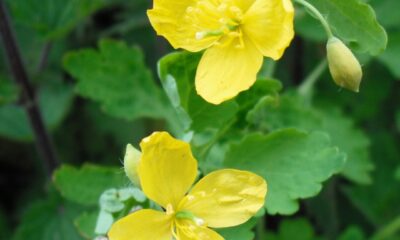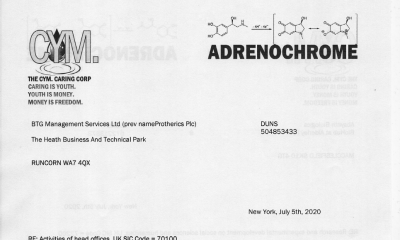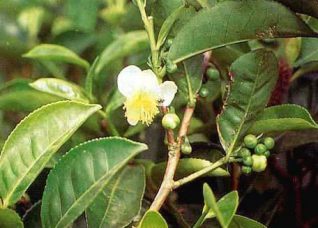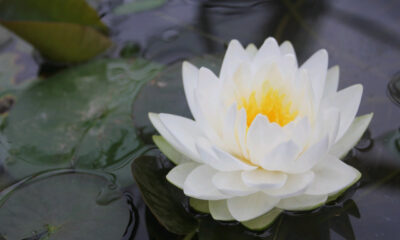https://doi.org/10.1111/jphp.12565
First published: 10 June 2016
Nathanael Y. S. Lee,William K. S. Khoo,Mohammad Akmal Adnan,Tanes Prasat Mahalingam,Anne R Fernandez,Kamalan Jeevaratnam
Abstract
Introduction
Phyllanthus niruri is a traditional shrub of the genus Phyllanthaceae with long-standing Ayurvedic, Chinese and Malay ethnomedical records. Preliminary studies from cell and animal model have provided valuable scientific evidence for its use.
Aim
This review aims to summarize selected scientific evidence on the pharmacological properties of P. niruri over the past 35 years while identifying potential areas of further development of this herb as an economical adjunct.
Methods
The review covers literature pertaining to the evidence base therapeutic potential of P. niruri spanning from 1980 to 2015 available on PubMed.
Results
Evidence suggests that the extracts of P. niruri possess hepatoprotective, antiviral, antibacterial, hypolipidaemic, hypoglycaemic, analgesic, anti-inflammatory, cardioprotective, anti-urolithiatic and antihyperuricaemic properties due its novel bioactive compounds.
Conclusion
Scientific evidence suggests that there is strong pharmacological potential in developing P. niruri as a drug to be used in liver disorders and in antiviral therapy. Despites this, large-scale heterogeneity in study protocol and unstandardized reporting standards limit the ability for valuable comparison and may mask the ability to replicate these studies. Thus interpretation of findings should be performed with caution and further studies should be performed in line with best practices. More cheminformatics, toxicological and mechanistic studies would aid the progress to clinical trial studies.
Introduction
Phyllanthus niruri is a perennial tropical shrub, which has been used for a wide range of diseases in South and south-east Asian traditional medicine, including but not limited to jaundice, diarrhoea, dyspepsia, genitourinary infections and renal stones. In Brazil, where the plant is known as ‘Chanca Piedra’ or ‘stone breaker’, preparations of P. niruri are considered folk remedies for renal and vesicular calculi.1 Traditional medicine systems, such as Ayurvedic and Unani medicine, have utilized the leaves and fruit, to treat gallstones and jaundice. In Malay traditional medicine, P. niruri, vernacularly known as ‘dukong anak’, is used for kidney disorders and cough.2 In South India, where the herb is called Bhumyamalaki, the herb is believed to treat constipation, gonorrhoea and syphilis.3 In northern India, this herb locally known as ‘pitirishi’ has gained a reputation as a household remedy for asthma, bronchitis and even tuberculosis.4 The young shoots of this herb may at times be used as an infusion in cases of chronic dysentery.5 Among traditional Chinese medicine circles, P. niruri or ‘zhu zi cao’ has traditionally been used to alleviate liver injury secondary to various hepatotoxic agents. In fact, ever since the landmark animal study by Venkateswaran and colleagues which demonstrated for the first time in vivo the potential anti-hepatitis B activity of P. niruri,6 this herb has received significant scientific interest leading to a range of studies looking at the various therapeutic potential of this plant species.
Phytochemical studies on this plant, from as early as 1861 when Ottow first isolated the lignan phyllanthin from this plant,7 to as recent as the isolation of potential anti-HBV phytochemicals nirtetralin and niranthin,8, 9 have revealed that this plant is rich in tannins, flavonoids, alkaloids, terpenes, coumarins, lignans and phenylpropanoids, which are responsible for the pharmacological activity of P. niruri. Table 1 summarizes the various compounds that have been isolated from this herb used in research. Despite its wide range of uses from an ethnomedicinal point of view, research regarding most of these potential therapeutic applications has not reached the level of clinical trials. As a matter of fact, there is a lack of consolidation regarding the current state of knowledge pertaining to P. niruri research. Heterogeneity of primary studies on P. niruri has also precluded an objective assessment of the plants potential and the mechanisms for most of the therapeutic activity of this herb have yet to be defined. P. niruri may potentially be an important drug lead as it should be reiterated that natural products from herbs are still crucial sources of novel therapeutic agents and new chemical entities. In addition, the previous over-reliance on combinatorial chemistry and the fact that it does not necessarily yield vast and pharmacologically feasible libraries has re-emphasized the importance of exploring natural products. The exploration of these natural products may lead to the development of innovative natural product-like libraries, which when coupled with the introduction of high-throughput screening assays, would be able to provide new drug leads for further development. Harnessing the therapeutic potential of common, multipurpose herbs like P. niruri provides more accessible and economical drugs, which not only target a wide range of chronic diseases, but have fewer side effects compared with synthetic agents. To enable more targeted future research on this plant, consolidation of scientific evidence and possible gaps in the knowledge need to be addressed. The present review aims to summarize and consolidate the current state of scientific evidence available on PubMed from 1980 until 2015 on the pharmacological properties of P. niruri. It will identify areas of further development of this herb as an economical adjunct or even as a novel alternative therapeutic agent and provide a direction for future research in the development of new Phyllanthus-based drugs.
Reference:
https://onlinelibrary.wiley.com/doi/full/10.1111/jphp.12565


 Alternative Health2 years ago
Alternative Health2 years ago
 Life Force Network2 years ago
Life Force Network2 years ago
 Alternative Health1 year ago
Alternative Health1 year ago
 Life Force Network2 years ago
Life Force Network2 years ago
 Alternative Health2 years ago
Alternative Health2 years ago
 Military2 years ago
Military2 years ago

















